Related Research Articles

Thoroughbred racing is a sport and industry involving the racing of Thoroughbred horses. It is governed by different national bodies. There are two forms of the sport – flat racing and jump racing, the latter known as National Hunt racing in the UK and steeplechasing in the US. Jump racing can be further divided into hurdling and steeplechasing.
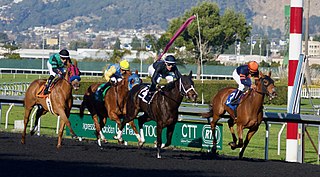
Horse racing is an equestrian performance activity, typically involving two or more horses ridden by jockeys over a set distance for competition. It is one of the most ancient of all sports, as its basic premise – to identify which of two or more horses is the fastest over a set course or distance – has been mostly unchanged since at least classical antiquity.

Horse racing is the second largest spectator sport in Great Britain, and one of the longest established, with a history dating back many centuries. According to a report by the British Horseracing Authority it generates £3.39 billion total direct and indirect expenditure in the British economy, of which £1.05 billion is from core racing industry expenditure, and the major horse racing events such as Royal Ascot and Cheltenham Festival are important dates in the British and international sporting and society calendar.

The Jockey Club is the largest commercial horse racing organisation in the United Kingdom. It owns 15 of Britain's famous racecourses, including Aintree, Cheltenham, Epsom Downs and both the Rowley Mile and July Course in Newmarket, amongst other horse racing assets such as the National Stud, and the property and land management company, Jockey Club Estates. The registered charity Racing Welfare is also a company limited by guarantee with the Jockey Club being the sole member. As it is governed by Royal Charter, all profits it makes are reinvested back into the sport.

Thoroughbred horse racing is a spectator sport in Australia, and gambling on horse races is a very popular pastime with A$14.3 billion wagered in 2009/10 with bookmakers and the Totalisator Agency Board (TAB). The two forms of Thoroughbred horseracing in Australia are flat racing, and races over fences or hurdles in Victoria and South Australia. Thoroughbred racing is the third most attended spectator sport in Australia, behind Australian rules football and rugby league, with almost two million admissions to 360 registered racecourses throughout Australia in 2009/10. Horseracing commenced soon after European settlement, and is now well-appointed with automatic totalizators, starting gates and photo finish cameras on nearly all Australian racecourses.
National Hunt racing is a form of horse racing particular to France, Great Britain, and Ireland, that requires horses to jump fences and ditches. In the UK it is divided into two major distinct branches, hurdling and steeplechase, as well as flat races called "bumpers". Hurdling involved the horses jumping over obstacles called hurdles, whereas in a steeplechase the horses jump over a variety of obstacles that can include plain fences, water jump or an open ditch. In the UK, the biggest National Hunt events of the year are generally considered to be the Grand National and the Cheltenham Gold Cup.

The racing of Thoroughbred horses is a popular gaming and spectator sport and industry in New Zealand.
The Irish Grand National is a National Hunt steeplechase in Ireland which is open to horses aged five years or older. It is run at Fairyhouse over a distance of about 3 miles and 5 furlongs, and during its running there are twenty-four fences to be jumped. It is a handicap race, and it is scheduled to take place each year on Easter Monday.

A point-to-point is a form of horse racing over fences for hunting horses and amateur riders. In Ireland, where the sport is open to licensed professional trainers, many of the horses will appear in these races before they compete in National Hunt races. Consequently, the Irish point-to-point tends to be used as a nursery for future young stars: a horse that wins its debut point-to-point in Ireland will often sell for a high price. Whilst professional trainers are specifically excluded from running horses in point-to-points in Great Britain, the days of the farmer running his hunter at the local point-to-point are gone.. Increasingly, horses are run from "livery yards" - unlicensed but otherwise professional training establishments, sometimes closely allied with a licensed yard.
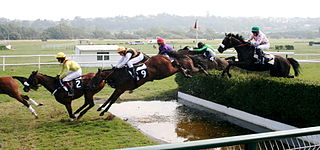
A steeplechase is a distance horse race in which competitors are required to jump diverse fence and ditch obstacles. Steeplechasing is primarily conducted in Ireland, Great Britain, Canada, United States, Australia, and France. The name is derived from early races in which orientation of the course was by reference to a church steeple, jumping fences and ditches and generally traversing the many intervening obstacles in the countryside.

Kelso Racecourse is a thoroughbred horse racing venue located in Kelso, Scotland. It is frequently described as "Britain's Friendliest Racecourse". It was voted the Best Small Course in Scotland and the North of England in 2007, 2012 and 2014 by the Racegoers Club. In addition to staging Scotland's most valuable hurdle race, the Morebattle Hurdle, Kelso stages a comparatively high number of Class 1, 2 & 3 races over jumps.
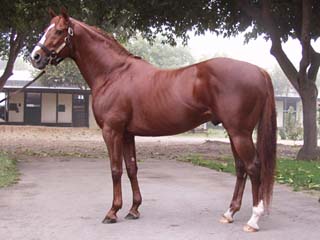
The Thoroughbred is a horse breed developed for horse racing. Although the word thoroughbred is sometimes used to refer to any breed of purebred horse, it technically refers only to the Thoroughbred breed. Thoroughbreds are considered "hot-blooded" horses that are known for their agility, speed, and spirit.
George W. Strawbridge Jr. is an American educator, historian, investor, sportsman and philanthropist.

Dundalk Stadium is a horse and greyhound racing venue in Ireland. It is located to the north of Dundalk in County Louth.
Fenian was a Thoroughbred racehorse who won the 1869 Belmont Stakes. Bred by August Belmont, Fenian raced as a two-year-old, winning two races, placing second twice, and third once from five starts. As a three-year-old he only raced once, in the Belmont, which he won. He suffered from bad legs and some accounts state that he never raced again after the Belmont, although he appears to have raced later as a gelding, and eventually ended up in England where he did some steeplechase races. His likeness is atop the trophy for the Belmont Stakes.
Patrick Joseph Prendergast (1910–1980), known as Paddy "Darkie" Prendergast was an Irish trainer of racehorses. He won seventeen Irish classics and became the first Irish trainer to have a major impact on British flat racing. He trained the first Irish winners of the 2000 Guineas and The Oaks and was British champion trainer for three successive seasons.
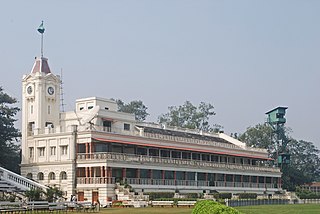
The Royal Calcutta Turf Club (RCTC) is a horse racing organisation which was founded in 1847 in Calcutta, British India. Horse events and sports were initially organised for the British cavalry at Akra before they were moved to the Maidan. The RCTC became the foremost horse-racing organization in India during the British Raj. At one time it was the governing body for nearly all racecourses in the subcontinent, defining and applying the rules governing the sport. During its heyday, RCTC-organised races were among the most important social events of the bigwigs' calendar and were opened by the Viceroy of India. Still a private club, the RCTC operates Kolkata Race Course in the Maidan.
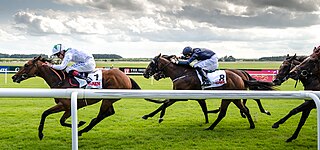
Horse racing in Ireland is intricately linked with Irish culture and society. The racing of horses has a long history on the island, being mentioned in some of the earliest texts. Domestically, racing is one of Ireland's most popular spectator sports, while on the international scene, Ireland is one of the strongest producers and trainers of Thoroughbred horses. The Irish horse racing industry is closely linked with that of Great Britain, with Irish horses regularly competing and winning on the British racing circuit.
The Irish Horseracing Regulatory Board (IHRB) is the regulatory body for the sport of horse racing in Ireland. The body, which is a limited company, took over the regulatory work previously carried out by the Turf Club and the Irish National Hunt Steeplechase Committee (INHSC) on 1 January 2018.
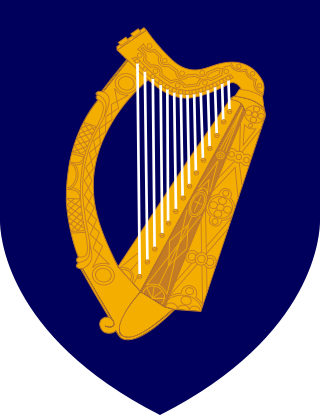
O'Connell & anor v The Turf Club, [2015] IESC 57, [2017] 2 IR 43 is an Irish Supreme Court case which explored the scope of judicial review in Ireland. It addressed whether the decisions of a sport's organizing body should be amenable to judicial review. In deciding that it was, this decision became a useful reminder that it is not only bodies created by statute, which are generally considered to be subject to public law, that are amenable to Judicial Review by the Courts.
References
- ↑ "Racing the Irish Way: A Guide to Racing in Ireland" (PDF). itm.ie. p. 6. Retrieved 19 July 2017.
- 1 2 Paul, Rouse (2015). Sport and Ireland: A History (First ed.). Oxford University Press. p. 67. ISBN 9780198745907.
- ↑ "Steeplechasing Notes". www.tbheritage.com. Retrieved 22 July 2017.
- ↑ "Provisional Summary of Point to Point Racing (Online Version) 26 September 2015 - 13 December 2015" (PDF). Irish National Hunt Steeplechase Committee. Retrieved 22 July 2017.
- 1 2 "The Turf Club". www.turfclub.ie. Retrieved 19 July 2017.
- ↑ "Racing the Irish Way: A Guide to Racing in Ireland" (PDF). itm.ie. p. 18. Retrieved 19 July 2017.
- ↑ Forristal, Richard (15 December 2017). "All change and no change as Turf Club transition to limited company looms". Racing Post . Archived from the original on 24 December 2018. Retrieved 19 December 2017.